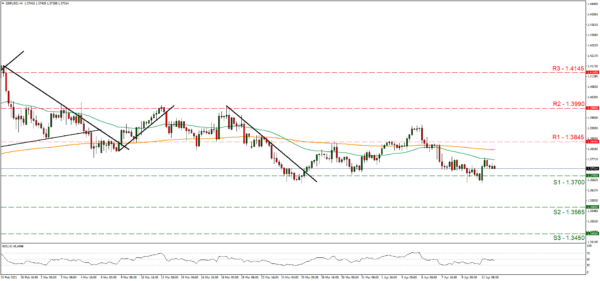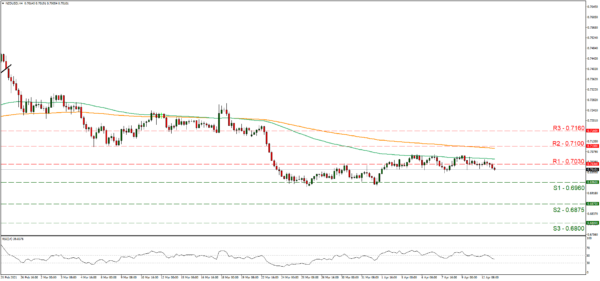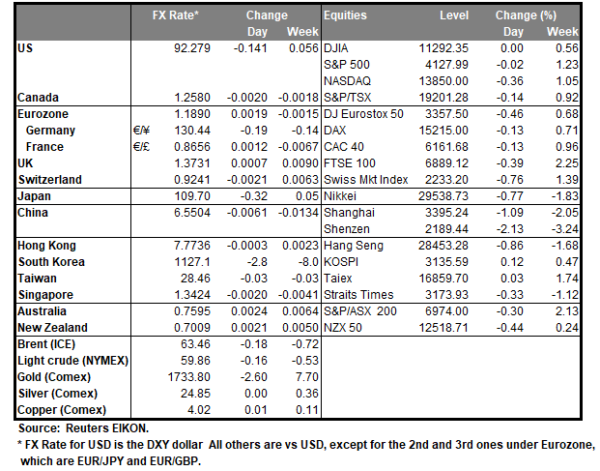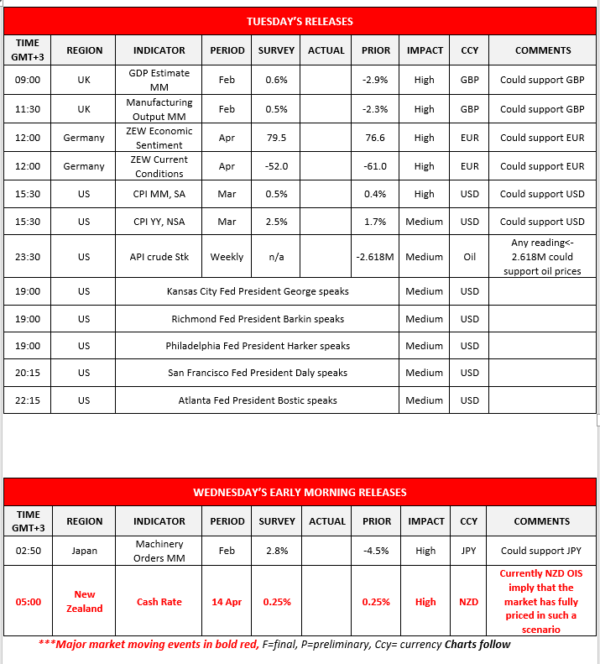The USD remained rather weak yesterday, despite the US 10 year yield rising slightly and the market’s attention turns to the CPI rates for March. Note that the US CPI rates for March are expected to accelerate and if so, could enhance expectations for further inflationary pressures in the US economy, thus boosting US yields. On the monetary front it should be noted that Boston’s Fed President Rosengren yesterday stated that that the economy has recovered substantially give the accommodative monetary and fiscal policies yet still has a long way to go, especially the employment market. Across the Atlantic, the UK vaccination program is ongoing and is reported to have reached its mid-April target to offer all over 50’s a Covid vaccine. At the same time, it should be noted that since yesterday, lockdown measures eased further as the UK has allowed non-essential shops to reopen. We may see pound traders today turning their attention to the financial releases for February, especially the GDP rates for the month.
GBP/USD jumped yesterday after unsuccessfully testing the 1.3700 (S1) support line. Given that he pair’s main body of the price action remains between the 1.3845 (R1) and the 1.3700 (S1) levels since the 23rd of March, we tend maintain a bias for a sideways motion currently. Also please note that the RSI indicator below our 4-hour chart, remains near the reading of 50, implying a rather indecisive market. Should the bulls be in charge of the pair’s direction, we may see cable rising, clearly breaking the 1.3845 (R1) resistance line and aim for the 1.3990 (R2) level. Should the bears take over, we may see the pair breaking the 1.3700 (S1) support line and aim for the 1.3565 (S2) support level.
RBNZ expected to remain on hold
On Wednesday’s Asian session RBNZ is to release its interest rate decision and is widely expected to remain on hold at 0.25% given its forward guidance as well as the fact that for the time being NZD OIS have fully priced in such a scenario materializing. Overall, we still see the case for the bank to maintain a rather dovish tone possibly reiterating the necessity of a prolonged monetary stimulus. The fact that the GDP rate declined even more for Q4 than what the bank expected since its last meeting, while also the trading surplus for February retreated somewhat enhances such expectations for a dovish stance. So overall we see the risks related to the event for the NZD as tilted to the bearish side maybe with less volatility than usual, unless the bank surprises the markets.
NZD/USD maintained a rather sideways motion near the 0.7030 (R1) resistance line. Overall, we tend to maintain our bias for a sideways motion of the pair for the time being yet the RBNZ’s meeting is a risk event. It should be noted though that the RSI indicator below our 4-hour chart is between the readings of 50 and 30, with a distinct downward trend, providing a slight advantage for the bears. Should a selling interest be displayed by the market for the pair, we may see NZD/USD breaking the 0.6960 (S1) support line and aim for the 0.6875 (S2) level. Should the buyers take the initiative over the pair’s direction, we may see NZD/USD breaking the 0.7030 (R1) resistance line and aim for the 0.7100 (R2) resistance level.
Other economic highlights today and early Tuesday:
Today during the European session, we get from the UK the GDP rate for February as well as the manufacturing output growth rate for the same month, while from Germany we get the more forward looking ZEW indicators for April. In the American session we get from the US the CPI rates for March and Just before the Asian session, we get the weekly API crude oil inventories figure. Also note that during the late American session, Kansas City Fed President George, Richmond Fed President Barkin, Philadelphia Fed President Harker, San Francisco Fed President Daly and Atlanta Fed President Bostic are scheduled to speak During Wednesday’s Asian session, besides the RBNZ’s interest rate decision, we also get Japan’s Machinery orders growth rate for February.
Support: 1.3700 (S1), 1.3565 (S2), 1.3450 (S3)
Resistance: 1.3845 (R1), 1.3990 (R2), 1.4145 (R3)
Support: 0.6960 (S1), 0.6875 (S2), 0.6800 (S3)
Resistance: 0.7030 (R1), 0.7100 (R2), 0.7160 (R3)




















